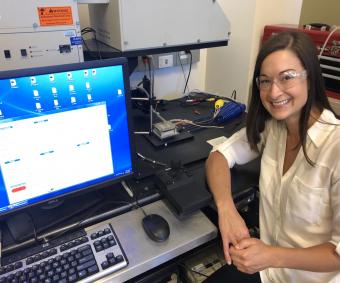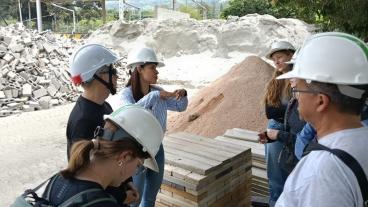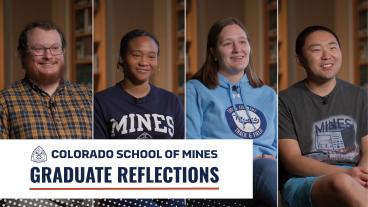Triple ionic-electronic conducting oxides show promise for fuel cells, electrolysis
Mines-NREL PhD student Meagan Papac is the lead author of the new research, published today in Nature Materials

“This paper will help guide anyone who wants to engineer a material with specific mixed-transport properties for a particular application," said PhD student Meagan Papac, lead author of the research published today in the journal Nature Materials.
A new paper from researchers at Colorado School of Mines and the U.S. Department of Energy’s National Renewable Energy Laboratory (NREL) provides the first comprehensive overview of triple ionic-electronic conducting oxides, a relatively new class of materials that offer intriguing opportunities to maximize performance in a variety of electrochemical devices including fuel cells, membrane reactors and electrolysis cells, all operating at elevated temperatures.
Named for their ability to conduct three different species simultaneously – oxygen ions, protons and electron holes – these newer ceramic oxides could be particularly useful as electrocatalysts for fuel cells and electrolysis cells where protons, oxygen ions and electrons are all involved in the process of electrochemically reacting oxygen and hydrogen to produce water and electricity, in the case of a fuel cell, or using electricity to split water to produce hydrogen and oxygen, in the case of electrolysis.
“So far, there are only a handful of known materials that exhibit this type of triple conducting behavior,” said Ryan O’Hayre, professor of metallurgical and materials engineering at Mines and co-author on the paper, which was published today in the journal Nature Materials.
Currently limiting their potential applications, however, is a lack of fundamental knowledge of the triple-conducting oxides’ transport properties and electrocatalytic activity.
“There’s a lot of information out there about mixed ionic-electronic conductors, but these materials are unique because they can transport more than one ionic species at the same time. There have been studies done on a few of these materials, but we wanted to provide a more comprehensive understanding of how to tune their properties,” said Meagan Papac, a joint Mines-NREL PhD student and lead author on the paper. “This paper will help guide anyone who wants to engineer a material with specific mixed-transport properties for a particular application.”
Specifically, the paper lays out the scientific principles guiding how triple ionic-electronic conducting oxides work and how one might go about designing or optimizing new and improved materials in the future. That includes discovery criteria, design principles and operating conditions that enable the deliberate tuning of the conductivity of each charge carrier.
“These are useful materials that transport multiple electric charges and contain multiple chemical elements,” said Andriy Zakutayev, an NREL scientist working on design and discovery of new materials, who contributed to the paper. “Their composition-property relationships are fascinating.”
One of the most prominent triple ionic-electronic conducting oxides was discovered by O’Hayre’s team at Mines a few years ago. Nicknamed BCFZY, it is a barium (Ba) based oxide that also contains cobalt (Co), iron (Fe), zirconium (Zr), and yttrium (Y).
Also contributing to the paper was Vladan Stevanovic, assistant professor of metallurgical and materials engineering at Mines, who provided insight into the theory of electronic conduction and defect formation in these materials and the prospects for designing new triple conductors with different types of conduction behavior.
To read the full paper, “Triple ionic–electronic conducting oxides for next-generation electrochemical devices,” go to https://www.nature.com/articles/s41563-020-00854-8.




